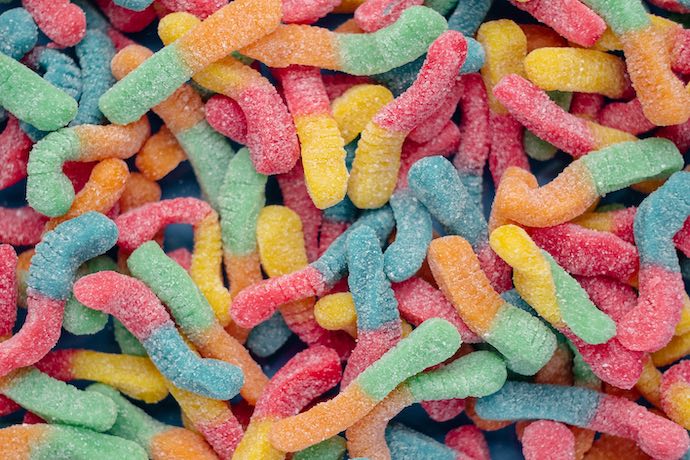We ALL know how hard it is to get children to eat healthy - but we all know the benefits of it, and why it's so important. Encouraging children at an early age to eat healthy is always great to encourage life long habits, but we know it's not always that easy.
So, how can we encourage healthy eating in children? What are the benefits? How can we build children up to make healthy choices throughout their lives?
We are all on this journey together, so keep reading to hear our tips on how to encourage healthy eating, and leave a comment if you want to share any tips of your own!
Main Photo by Thomas Park on Unsplash

Photo by Kelly Sikkema on Unsplash
What Are the Benefits of Healthy Eating
Eating healthy has numerous benefits that can greatly improve one's overall well-being. Here are some of the key advantages of maintaining a healthy diet especially in children:
1. Improved physical health: A healthy diet rich in fruits, vegetables, whole grains, lean proteins, and low-fat dairy products provides essential nutrients, vitamins, and minerals that contribute to a strong immune system, better digestion, and a reduced risk of chronic diseases such as heart disease, diabetes, and certain types of cancer.
2. Weight management: Eating a balanced diet can help in managing weight effectively. By consuming nutrient-dense foods and controlling portion sizes, individuals can achieve and maintain a healthy weight. This helps lower the risk of obesity-related complications such as high blood pressure, joint problems, and sleep apnea.
3. Enhanced mental well-being: Proper nutrition plays a vital role in supporting brain function and mental health. Consuming a variety of fruits, vegetables, whole grains, fish, nuts, and seeds can provide essential nutrients like omega-3 fatty acids, antioxidants, and B vitamins, which have been linked to improved mood, cognitive function, and reduced risk of mental health disorders like depression and anxiety.
4. Increased energy levels: A healthy diet provides the necessary fuel for the body. Foods rich in complex carbohydrates, fiber, and protein release energy slowly, providing a steady supply of fuel throughout the day. This helps prevent energy crashes and promotes sustained productivity and focus.
5. Better sleep quality: Certain nutrients found in healthy foods, such asmagnesium and tryptophan, can promote better sleep quality. Consuming foods like almonds, spinach, bananas, and turkey can help regulate sleep patterns and improve the overall quality of sleep.
6. Stronger immune system: A healthy diet can strengthen the immune system and reduce the risk of infections and illnesses. Nutrient-rich foods, such as citrus fruits, berries, garlic, and yogurt, provide essential vitamins, minerals, and antioxidants that support immune function and help the body fight off harmful pathogens.
7. Improved digestion: Eating a diet high in fiber, such as whole grains, fruits, vegetables, and legumes, can promote healthy digestion and prevent digestive issues like constipation and bloating. Fiber adds bulk to the stool, making it easier to pass through the digestive system and promoting regular bowel movements.
8. Longevity: Research has consistently shown that maintaining a healthy diet is associated with a longer lifespan. A balanced and nutrient-rich diet can reduce the risk of chronic diseases and age-related conditions, thus increasing overall life expectancy.
Sounds great to us!

Photo by Helena Lopes on Unsplash
How to Encourage Healthy Eating
Encouraging children to eat healthy can be a challenge, but there are several strategies that parents and caregivers can employ to foster good eating habits:
1. Lead by example: Children are more likely to adopt healthy eating habits if they see their parents and caregivers following a nutritious diet. Be a role model by eating a variety of nutritious foods and demonstrating positive attitudes towards healthy eating.
2. Make healthy food fun: Get creative with presentation and make healthy food exciting for children. Use colorful fruits and vegetables to create fun and visually appealing meals. Cut foods into interesting shapes or arrange them into fun designs. Make healthy snacks like veggie sticks with dip or fruit kebabs. The more enjoyable and appealing the food looks, the more likely children are to try and enjoy it.
3. Involve children in meal planning and preparation: Let children have a say in what meals and snacks are prepared. Take them grocery shopping and let them choose fruits, vegetables, and other healthy options. Involving children in meal preparation can also make them more invested in eating the final product.
4. Create a positive eating environment: Make mealtimes a pleasant and relaxed experience. Avoid pressuring or forcing children to eat certain foods. Instead, provide a variety of healthy options and let children choose what they want to eat. Offer praise and positive reinforcement when children make healthy choices.
5. Limit unhealthy options: While it's important to allow for occasional treats, it's also important to limit access to unhealthy foods. Stock the pantry and fridge with nutritious snacks like fruits, vegetables, yogurt, and nuts. Limit the availability of sugary drinks, processed snacks, and fast food.
6. Educate and explain the benefits: Teach children about the importance of healthy eating and how it can benefit their overall health and well-being. Explain the role of different food groups and nutrients in the body.

Photo by Maarten van den Heuvel on Unsplash
How To Deal With Picky Eaters
Ah, the joys of dealing with picky eating children. It's a struggle that many parents can relate to. One day your little one loves broccoli, and the next day they refuse to even look at it. It can be frustrating, but fear not, dear parents, for I have some tips to help you navigate this tricky territory.
First and foremost, don't panic. It's normal for kids to be picky eaters. Offer a variety of healthy options and let them choose what they want to eat. Get creative with presentation and involve them in meal planning and preparation.
And remember, patience is key. So take a deep breath, and let's tackle picky eating together!

Photo by Jimmy Dean on Unsplash
How can you politely tell other parents to not feed your child junk food?
Let's talk about this point that many of us have probably encountered at some point: other parents offering our kids junk food. It's a situation that can be tricky to navigate, but we all want what's best for our children's health, right?
First things first, remember that it's okay to politely advocate for your child's well-being. Start by explaining to the other parent that you're trying to establish healthy eating habits for your little one. You can say something like, "Hey, I'm really trying to teach my child about the importance of nutritious food. Would you mind not offering them junk food? I really appreciate it!"
Keep in mind that most parents genuinely mean well and may not even realize the impact of their actions. By having an open and friendly conversation, you can help create a supportive environment for your child's healthy eating habits. Remember, we're all in this parenting journey together!

Photo by Karsten Winegeart on Unsplash
What Are Some Healthy Foods For Children
First up, fruits and veggies are the superheroes of nutrition. Packed with vitamins, fiber, and antioxidants, they're essential for your kids' growth and development. Sneak some blueberries into their morning cereal or whip up a batch of colorful veggie sticks for snack time.
Next, whole grains are the way to go. Swap out refined grains for whole grain options like whole wheat bread, brown rice, and oatmeal. These are rich in fiber and will keep your little ones feeling full and energized throughout the day.
Protein is also crucial, as it helps build and repair tissues. Lean meats like chicken and turkey, as well as fish and beans, are excellent sources of protein. Get creative with your recipes and try making homemade chicken nuggets or black bean burgers.
And let's not forget about dairy! Milk, cheese, and yogurt are fantastic sources of calcium, which is essential for strong bones and teeth. Opt for low-fat or non-fat options, and remember, moderation is key.
Last but not least, hydration is vital. Encourage your kiddos to drink plenty of water throughout the day to keep them hydrated and help maintain their overall health.
Keep an eye on that 5 a day for them too - and if you get them to create a chart for the fridge, not only can they be creative but they can really understand why it's important to have things like oily fish, fibre, vitamins and minerals in their diet!

Photo by Brooke Lark on Unsplash
How can I plan healthy meals for my family?
Planning healthy meals for your family is a great way to ensure that everyone is getting the nutrition they need to thrive. Here are some tips to help you plan healthy meals for your family:
1. Make a weekly meal plan: Start by making a weekly meal plan, taking into account everyone's preferences and dietary needs. This will help you stay organized and prevent last-minute unhealthy food choices.
2. Include a variety of food groups: Make sure to include a variety of food groups in each meal. Aim to incorporate fruits, vegetables, whole grains, lean proteins, and healthy fats. This will ensure a well-rounded and balanced diet.
3. Plan for leftovers: Planning for leftovers can save you time and effort. Cook larger batches of meals (but not serving large portions) and use the leftovers for lunches or dinners later in the week. This will help you avoid relying on processed and unhealthy convenience foods.
4. Choose whole, unprocessed foods: Opt for whole, unprocessed foods as much as possible. These include fresh fruits and vegetables, whole grains, lean proteins, and healthy fats. Avoid processed foods high in added sugars, unhealthy fats, and preservatives.
5. Get creative with flavors: Experiment with different herbs, spices, and healthy sauces to make your meals more flavorful. This will make healthy eating more enjoyable for your family.
6. Involve your family: Involve your family in the meal planning process. Ask them for input on the meals they would like to have and give them the opportunity to help with meal preparation.

Photo by Vitolda Klein on Unsplash
Healthy eating in children is so important, but as we can all agree, can be quite challenging. But stick with it - there are always other parents out there going through what you are going through, and there are plenty of ways to share stories, and find support. This site included!
Share your stories below, offer tips, ask questions, and together we can ensure our children grow up with the nutrients they need to be their best selves possible!
FAQ: Healthy Eating for Kids
Yes, there are several hidden ingredients in processed foods that you should be cautious about. Processed foods are typically designed to be convenient and have a longer shelf life, but they often contain additives, preservatives, and other substances that can be harmful to your health. Here are a few hidden ingredients commonly found in processed foods that you should watch out for: 1. Artificial sweeteners: Processed foods, especially those marketed as "diet" or "low-sugar," often contain artificial sweeteners. These sweeteners, such as aspartame, sucralose, and saccharin, are used to provide the taste of sweetness without the calories. However, studies have linked artificial sweeteners to various health issues, including weight gain, metabolic disorders, and increased cravings for sugary foods. 2. Trans fats: Trans fats are a type of unsaturated fat that undergoes hydrogenation, a process that turns liquid oils into solid fats to increase the shelf life of processed foods. Trans fats are commonly found in baked goods, fried foods, and packaged snacks. They raise your bad cholesterol levels, lower the good cholesterol levels, and increase the risk of heart disease, stroke, and type 2 diabetes. Be cautious of ingredients like hydrogenated or partially hydrogenated oils, as they indicate the presence of trans fats. 3. High-fructose corn syrup (HFCS): HFCS is a sweetener derived from corn and is commonly used in processed foods and beverages to enhance sweetness. It is more affordable than sugar and helps prolong the shelf life of products. However, consuming HFCS in excess has been linked to weight gain, obesity, and an increased risk of chronic diseases such as type 2 diabetes and heart disease. Look out for HFCS on ingredient lists, as it is often added to processed foods such as sodas, cereals, baked goods, and condiments. 4. Artificial food colorings: Many processed foods use artificial food colorings to enhance their appearance and make them more visually appealing. These colorings, such as Red 40, Yellow 5, and Blue 1, have been associated with hyperactivity in children, allergic reactions, and even cancer. It is best to choose foods that use natural food colorings or avoid artificially colored foods altogether. 5. Preservatives: Processed foods often contain preservatives to extend their shelf life and prevent spoilage. While preservatives are necessary to maintain the quality and safety of certain foods, some can have negative effects on health. For example, sodium nitrate/nitrite, commonly used in processed meats, has been linked to an increased risk of certain cancers. Other preservatives like BHA and BHT have been associated with allergies and hormone disruption. It is advisable to read ingredient labels and opt for foods with minimal or no preservatives. These are just a few examples of hidden ingredients commonly found in processed foods.
First up on the list are sugary drinks. These sweet sippers can lead to tooth decay and weight gain. So, it's best to limit their consumption and opt for water instead. Keep in mind the "low/no-sugar" options are not healthy at all. Next, we have processed snacks. Think chips, cookies, and candies. These may be tasty, but they're often packed with unhealthy fats, sugar, and sodium. Encourage your kids to snack on fresh fruits, veggies, or homemade treats instead. Lastly, fast food. While it may be tempting for its convenience, fast food is typically high in calories, unhealthy fats, and sodium. Try cooking at home more often to ensure your little ones are getting the nutrients they need.
1. Plan Ahead: Before you even step foot in the store, take a few minutes to plan out your meals for the week. This will not only save you time, but also ensure that you have a well-rounded and healthy selection of ingredients. Make a list of the items you need and stick to it! 2. Shop the Perimeter: Have you ever noticed that the fresh produce, meat, and dairy sections are located along the outer edges of the store? That's because these areas generally contain the most whole and unprocessed foods. By focusing on the perimeter, you're more likely to fill your cart with nutritious goodies. 3. Read Labels: While shopping, take some time to read the food labels on packaged foods. Look out for hidden sugars, unhealthy fats, and artificial additives. Choose products with shorter ingredient lists and ingredients that you recognize and can pronounce including whole foods. Remember, knowledge is power! 4. Fresh is Best: Whenever possible, opt for fresh fruits and vegetables over their canned or frozen counterparts. Fresh produce is not only packed with more nutrients, but it also tastes better too.











Lisa Downs
Lisa has been a content writer for Family Days Out for nearly 10 years, and a keen travel writer for nearly 20. She loves experiencing the best of a city, discovering the many things to do and immersing herself in the culture, and sharing these experiences with others through her writing.
Leave a comment